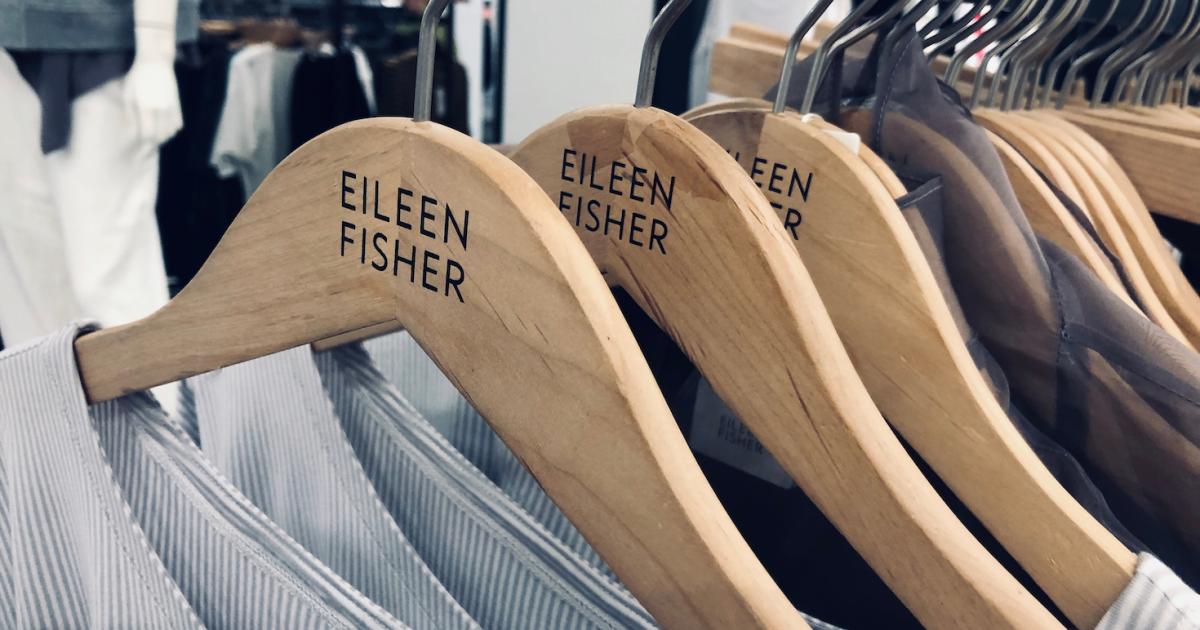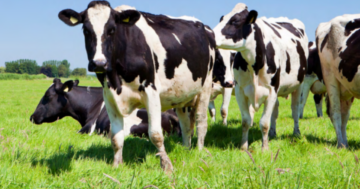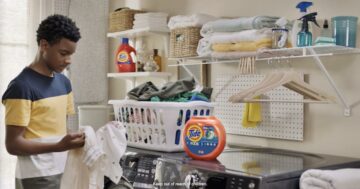
For 40 years, Eileen Fisher has cultivated a very loyal — almost groupie — customer for its minimalist, classic and timeless styles. And now it taps that cult following to help boost its circular business and create a model for other apparel brands.
Eileen Fisher’s clothing “take back” program, Renew, has collected 2 million garments — about 20,000 per month — from customers since 2009. The Eileen Fisher team and its partners get hands-on sorting, cleaning and repairing returned items. Many pieces get repaired and resold in the brick-and-mortar stores and online, while those that are too far gone are often downcycled into art, pillow cases and other products, said Carmen Gama, director of circular design at Eileen Fisher, during a panel at GreenBiz’s Circularity 23 conference this week in Seattle.
Here are six business lessons Eileen Fisher has learned since it launched the program that can help guide others designing and scaling circular products and businesses too.
1. Make it easy for customers
Eileen Fisher has more than 60 retail stores across the country, where customers can easily drop off used clothing. The company also gives customers the option to mail clothes directly to its warehouses. As a small incentive, each item, no matter what the condition, gets a $5 credit. Refurbished items are then sold both in-store and online to create the same shopping experience as new clothes.
2. Learn from what you get back
“When you see damaged goods all day long, you get a lot of information,” Gama said.
The Eileen Fisher team examines the clothes customers return to gain valuable insights and potential improvements on its products — such as a pair of leather pants that keeps coming back after years of wear with the same split down the side seam, or how a certain material keeps showing up with an oily stain. The feedback is relayed to the design team to avoid or prolong similar outcomes in future products when they’re made.
It’s a huge economic opportunity for a brand to actually recover the value from the things it’s already produced.
3. Figure out what to phase out
The take back program helps identify materials that can be reused — and those that can’t.
According to Gama: Viscose, nylon, spandex, blended fabrics and polyester are impossible to recycle. “There’s no solution for 4 percent of the materials, so why are we using them?” she asked, rhetorically.
Look to use materials that can be more readily returned to the system without affecting the quality or design loyal customers have come to expect.
4. Recognize it will be expensive
It’s costly for a company to be responsible for damaged goods and reverse logistics. And then updating or recycling returned garments has even more costs. “No one has figured out how to make money out of it,” Gama said.
Eileen Fisher doesn’t cover the costs to ship returned items because that would be too expensive.
5. More infrastructure is needed
Gama emphasized that more investment in infrastructure is needed to make and scale circular products and systems.
“There is so much investment into technology and software, but not as much into infrastructure to deal with the amount of clothes we are working with,” she said.
She also sees a crucial role for government to play and invest in, like the introduction of a blue bin-style street recycling program just for fashion, clothes and textiles.
6. You’ll always be in ‘pitch’ mode
Even at an organization that prioritizes sustainability, you’ll still have to work all the time to convince leadership of the value of a takeback program, Gama said. You’ll need to continue to make a strong business case on how to do it while still supporting operational and profit objectives.
Yet, she’s optimistic.
“It’s a huge economic opportunity for a brand to actually recover the value from the things it’s already produced,” she said.
- SEO Powered Content & PR Distribution. Get Amplified Today.
- EVM Finance. Unified Interface for Decentralized Finance. Access Here.
- Quantum Media Group. IR/PR Amplified. Access Here.
- PlatoAiStream. Web3 Data Intelligence. Knowledge Amplified. Access Here.
- Source: https://www.greenbiz.com/article/eileen-fisher-6-lessons-14-years-recycling-clothes
- :has
- :is
- :not
- :where
- $UP
- 000
- 14
- 20
- 23
- 40
- 60
- a
- About
- across
- actually
- affecting
- After
- All
- already
- also
- always
- amount
- an
- and
- apparel
- ARE
- Art
- article
- AS
- At
- avoid
- back
- BE
- because
- Blue
- boost
- both
- brand
- brands
- business
- businesses
- but
- CAN
- case
- cases
- Catch
- certain
- classic
- Cleaning
- clothes
- Clothing
- come
- coming
- company
- condition
- continue
- convince
- costly
- Costs
- country
- cover
- create
- credit
- crucial
- cult
- customer
- Customers
- day
- deal
- Design
- designing
- directly
- Director
- do
- Doesn’t
- down
- Drop
- during
- each
- easily
- easy
- Economic
- emphasized
- Ether (ETH)
- Even
- Event
- Examines
- expect
- expensive
- experience
- fabrics
- far
- Fashion
- feedback
- Figure
- figured
- following
- For
- from
- future
- Gain
- garments
- get
- gives
- gone
- goods
- Government
- guide
- hands-on
- Have
- help
- helps
- How
- How To
- HTTPS
- huge
- identify
- impossible
- improvements
- in
- in-Store
- Incentive
- information
- Infrastructure
- insights
- into
- Introduction
- Invest
- investment
- IT
- items
- ITS
- jpg
- just
- launched
- Leadership
- LEARN
- learned
- Lessons
- like
- ll
- logistics
- Long
- Lot
- loyal
- loyal customers
- made
- make
- make money
- many
- material
- materials
- Matter
- million
- model
- money
- Month
- more
- much
- Need
- needed
- New
- no
- node
- now
- objectives
- of
- off
- often
- on
- ONE
- online
- operational
- Opportunity
- Optimistic
- Option
- or
- organization
- Other
- Others
- our
- out
- outcomes
- pair
- panel
- partners
- percent
- phase
- pieces
- plato
- Plato Data Intelligence
- PlatoData
- Play
- potential
- Produced
- Products
- Profit
- Program
- quality
- recognize
- Recover
- recycling
- repairing
- responsible
- retail
- return
- reverse
- Role
- s
- Said
- same
- Scale
- scaling
- Seattle
- see
- sees
- she
- Shopping
- showing
- side
- similar
- since
- SIX
- small
- So
- Software
- sold
- solution
- split
- Still
- stores
- street
- strong
- such
- Supporting
- Sustainability
- system
- Systems
- Take
- Taps
- team
- Technology
- textiles
- than
- that
- The
- Them
- then
- There.
- things
- this
- this week
- those
- time
- timeless
- to
- too
- updating
- use
- used
- using
- Valuable
- value
- very
- we
- week
- What
- when
- while
- why
- will
- with
- without
- Work
- working
- would
- years
- you
- zephyrnet









